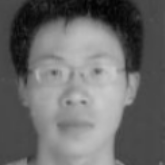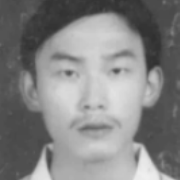International Journal of Computer Network and Information Security (IJCNIS)
IJCNIS Vol. 4, No. 2, 8 Mar. 2012
Cover page and Table of Contents: PDF (size: 309KB)
Improved Classification Methods for Brain Computer Interface System
Full Text (PDF, 309KB), PP.15-21
Views: 0 Downloads: 0
Author(s)
Index Terms
Brain computer interface, signal processing, motor imagery, classifier, nonlinear transform
Abstract
Brain computer interface (BCI) aims at providing a new communication way without brain’s normal output through nerve and muscle. The electroencephalography (EEG) has been widely used for BCI system because it is a non-invasive approach. For the EEG signals of left and right hand motor imagery, the event-related desynchronization (ERD) and event-related synchronization(ERS) are used as classification features in this paper. The raw data are transformed by nonlinear methods and classified by Fisher classifier. Compared with the linear methods, the classification accuracy can get an obvious increase to 86.25%. Two different nonlinear transform were arised and one of them is under the consideration of the relativity of two channels of EEG signals. With these nonlinear transform, the performance are also stable with the balance of two misclassifications.
Cite This Paper
YI Fang, LI Hao, JIN Xiaojie, "Improved Classification Methods for Brain Computer Interface System", International Journal of Computer Network and Information Security(IJCNIS), vol.4, no.2, pp.15-21, 2012. DOI:10.5815/ijcnis.2012.02.03
Reference
[1]Paul Sajda, Klaus-Robert Müller and Krishna V. Shenoy, “Brain-Computer Interfaces, ” IEEE Signal Processing Magazine, 2008. January. pp.16-28.
[2]Muhammad Bilal Khalid, Naveed Iqbal Rao, Intisar Rizwan-i-Haque, Sarmad Munir, Farhan Tahir, “ A Brain Computer Interface (BCI) using Fractional Fourier Transform with Time Domain Normalization and Heuristic Weight Adjustment”, Proceedings of ICSP(2008) China.
[3]Wu Bian,Zheng Xiaoxiang,Su Yu,Zhang Jianhui,Li Xin,Zhang Jicai, Cheng Weidong , “A Virtual Chinese Keyboard BCI System Based on P300 Potentials ”, Acta Electronica Sinica, vol.37, no.8, 2009.
[4]Steven Lemm, Christin Schäfer, and Gabriel Curio.“ BCI Competition 2003—Data Set III: Probabilistic Modeling of SensorimotorμRhythms for Classification of Imaginary Hand Movements”. IEEE Transactions on Biomedical Engineering , vol.51, no.6, June 2004.
[5]Zhao Qibin, Zhang Liqing,CIichocki Andrzej,“EEG-based asynchronous BCI control of a car in 3D virtual reality environments”, Chinese Science Bulletin, vol.54, no.1, pp.78-87, January 2009.
[6]Alois S, “Data set:BCI-experiment”, http://www.bbci.de/ competition/ii/Graz_description.doc, 2003.
[7]Arnaud Delorme,Scott Makeig. “EEG changes accompanying learned regulation of 12-Hz EEG activity”. a Center of the Institute for Neural Computation,the University of California San Diego.
[8]Pei Xiaomei, Zheng Chongxun, Bin Guangyu, “Classification of the Mental Tasks Based on Multichannel Electroencephalogram Features”, Journal of Xi'an Jiaotong University (in Chinese), vol.39, no.8, 2005.
[9]Pei Xiaomei, Zheng Chongxun, “Feature Selection and Optimization of Movement-Related EEG Based on Fisher Criterion Time Frequency Analysis, ” Journal of Xi'an Jiaotong University (in Chinese), vol.42, no.8, 2008.
[10]Ying Jiguang, Wan Xingyu, “Analysis of Right and Left Motor Imagery Based Empirical Mode Decomposition”, Progress in Biomedical Engineering (in Chinese), vol.30, no.3 pp.125-130, 2009
[11]Sykacek Peter, Roberts Stephen J, Stokes Maria, “Adaptive BCI based on variational bayesian Kalman filtering: An empirical evaluation, ” IEEE Transactions on Biomedical Engineering, vol.51, no.5, pp. 719-727. 2004


